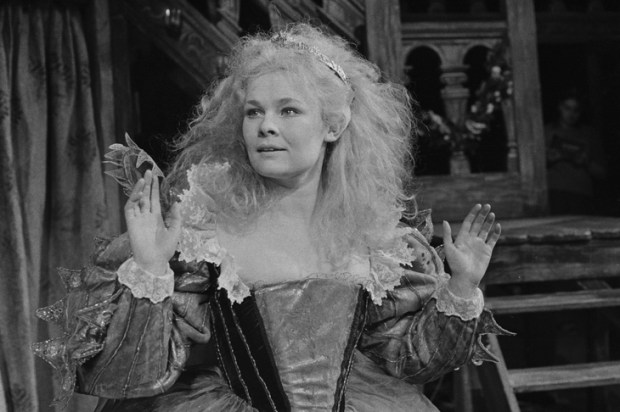There’s always something breathtaking about the prices great art can fetch but the sale of Leonardo’s ‘Salvator Mundi’ at Christie’s back in 2017 sounds from the audio (which memorably opens Westside Gunn’s hip hop extravaganza Pray for Paris) like something out of a film. It went for a cool US$450 million and the fabulous far-fetchedness is compounded by ignorance.
If you have forgotten this representation of Christ, the Saviour of the World, you are likely to recognise the mannerisms of Leonardo and that enigmatic touch-me-not quality but still feel a touch alienated in a way you don’t with one of the two versions of ‘The Virgin of the Rocks’ (one in the National Gallery London, one in the Louvre in Paris) or indeed with the enigma to end all enigmas, the ‘Mona Lisa’.
When you’re less familiar with a painting the very idiom of its power can make it look like a ring-in. In the case of ‘Salvator Mundi’ this may be in part because of questions about its condition. (The face had been poorly restored and more than sixty per cent of the top layer of paint lost.)
But only in part. Consider Caravaggio, that extraordinary master of chiaroscuro and the pure drama of his effects. The uncanny, pulsating realism of a dark and dodgy street life is entirely congruent with his dazzling representation of some of the greatest and most familiar stories in the Bible.
What about David, the shepherd boy with the slingshot who brings down the philistine giant Goliath? Turn to the image of David –than whom no King will come to be greater– holding the head of the dead foe (incidentally the cover art of the aforementioned Westside Gunn album) and it’s not the painting you recollect though Caravaggio is always Caravaggio with drama coming at you like a thief in the night.
Try a different subject with a swipe of your phone and it’s a different image from your memory though it has a family resemblance. How about that related moment in the dramaturgy of the Old Testament, Judith with the head of Holofernes? Again, yes and no. How about a flick to that extraordinary disciple of Caravaggio who made the painterly lingo of the master who could wield a brush like a swordsman into a jewel her own and sometimes equalled him, Artemisia Gentileschi?
Well, here we strike gold. The image buried nightmarishly but with such grandeur in the mind is ‘Judith Slaying Holofernes’ showing the sword to his throat that was painted by the great female artist some time between 1612 and 1621, just possibly during the lifetime of Shakespeare and perhaps overlapping with the great masters of Jacobean tragedy such as Webster in The Duchess of Malfi or Middleton in The Changeling.
It is also the period when the King James Bible is first being read. The combination of finding the treasured gruesome image and the proximity to the transfiguration of stage lighting and the most majestic literature we have – Don Quixote from Spain and the great drama of Lope De Vega’s Fuenteovejuna (a story of rebellion and oppression) – leads someone to ask why the male genitalia of Caravaggio’s street boys and even the tackle of those golden victors, the ‘David’ of Donatello (1430-1440) and then the massive ‘David’ of Michelangelo (1501-1504) is on the small side.
This seems to be a question for Claude, our favourite AI know-all, who says the moderate-sized Renaissance genitals follow the classical precendent whereby the Greeks and the Romans thought demure-scale penises were appropriate for noble subjects and reserved wild priapic extensions for the Satyrs to be found on those beautiful Greek vases.
Speaking of penises, the marvellous Christopher Hitchens used to take male circumcision as an instance of religious cruelty and declared it as almost but not quite as morally repugnant as clitorectomy (which it is not).
Despite this that beautiful man, Peter Corrigan, who did so much to transfigure the architectural idiom of the Australian suburbs, confessed once that when he was invited to a New York circumcision the sight of the rabbi with his knife made him quail so much that he fainted.
And if the history of this practice intrigues, consult Claude who thinks (if that’s the word) that Moses, brought up as a prince of Egypt and the son of the Pharaoh’s daughter, might well have been circumcised according to Egyptian custom. Claude also tells us that the evidence suggests that the practice encouraged in all airmen by the RAAF in the second world war acually seems to have got going in the 6th century BC. A bit later than you might think.
It was saddening to see the other day the death of Timothy West at the age of 90. He was devoted to his wife Prunella Scales who suffered from dementia but who will be remembered forever as ‘Sybil!’ in Fawlty Towers, one of the great comic performances of all time.
Timothy West played Lear in this country and doubled it with Hamm in Beckett’s Endgame and Holofernes (the schoolmaster, not the tyrant) in Love’s Labour’s Lost. Much later West realised an old ambition of playing Falstaff to the Prince Hal of his son Samuel West.
Twenty-odd years after his Lear his voice could be heard booming out to Prunella Scales at London’s Aldwych with utter enthusiasm for Michael Pennington who did Coriolanus and The Winter’s Tale in one day. ‘He’s as poor as a churchmouse,’ West bellowed, ‘but look what he can do!’
West himself played Mortimer to Ian McKellen’s Edward II and Bolingbroke to his Richard II. He came to this country again to play Judge Brack to the Hedda Gabler of Glenda Jackson.
An old production of Henry IV came to mind when we realised watching Jilly Cooper’s Rivals that we were watching Alex Hassell – a pretty mousey Hal to Antony Sher’s Falstaff – acting with staggering elan as the cad Rupert Campbell-Black.
Rivals on Disney+ is an absolute hoot. An utterly sumptuous re-creation of the 1980s at their most exorbitant and depraved which includes a wonderful performance – improbably in something like Noel Coward mode – from David Tennant and a beautiful one by Bella Maclean as Taggie, the gorgeous dyslexic girl who positively pants for Hassell.
And he acts like a leading man to die for. Wonderfully poised and handsome and with a capacity to be sane and tender as well. You really do think of Peter O’Toole.
Got something to add? Join the discussion and comment below.
You might disagree with half of it, but you’ll enjoy reading all of it. Try your first month for free, then just $2 a week for the remainder of your first year.













